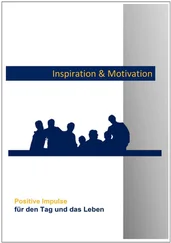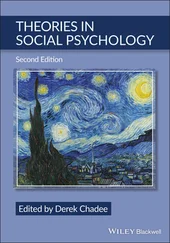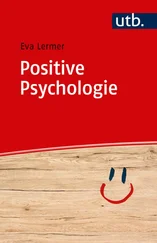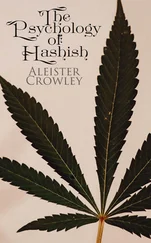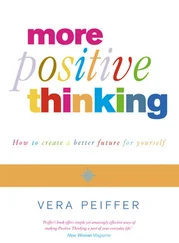79 Preston, S. D. (2013). The origins of altruism in offspring care. Psychological Bulletin, 139, 1305–1341.
80 Prinz, J. (2011). Against empathy. The Southern Journal of Philosophy, 49, 214–233.
81 Rouhana, N. N., & Kelman, H. C. (1994). Promoting joint thinking in international conflicts: An Israeli–Palestinian continuing workshop. Journal of Social Issues, 50, 157–178.
82 Rumble, A. C., Van Lange, P. A. M., & Parks, C. D. (2010). The benefits of empathy: When empathy may sustain cooperation in social dilemmas. European Journal of Social Psychology, 40, 856–866.
83 Ryan, W. (1971). Blaming the victim. New York, NY: Random House.
84 Scherer, K. R. (1984). On the nature and function of emotion: A component process approach. In K. R. Scherer & P. Ekman (Eds.), Approaches to emotion (pp. 293–317). Hillsdale, NJ: Lawrence Erlbaum.
85 Schultz, P. W. (2000). Empathizing with nature: The effects of perspective taking on concern for environmental issues. Journal of Social Issues, 56, 391–406.
86 Sen, A. K. (1977). Rational fools. Philosophy & Public Affairs, 6, 317–344.
87 Shaw, L. L., Batson, C. D., & Todd, R. M. (1994). Empathy avoidance: Forestalling feeling for another in order to escape the motivational consequences. Journal of Personality and Social Psychology, 67, 879–887.
88 Shelton, M. L., & Rogers, R. W. (1981). Fear‐arousing and empathy‐arousing appeals to help: The pathos of persuasion. Journal of Applied Social Psychology, 11, 366–378.
89 Sibicky, M. E., Schroeder, D. A., & Dovidio, J. F. (1995). Empathy and helping: Considering the consequences of intervention. Basic and Applied Social Psychology, 16, 435–453.
90 Smith, K. D., Keating, J. P., & Stotland, E. (1989). Altruism reconsidered: The effect of denying feedback on a victim’s status to empathic witnesses. Journal of Personality and Social Psychology, 57, 641–650.
91 Sober, E. (1991). The logic of the empathy‐altruism hypothesis. Psychological Inquiry, 2, 144–147.
92 Sober, E., & Wilson, D. S. (1998). Unto others: The evolution and psychology of unselfish behavior. Cambridge, MA: Harvard University Press.
93 Stephan, W. G., & Finlay, K. (1999). The role of empathy in improving intergroup relations. Journal of Social Issues, 55, 729–743.
94 Stotland, E. (1969). Exploratory investigations of empathy. In L. Berkowitz (Ed.), Advances in experimental social psychology (Vol. 4, pp. 271–313). New York, NY: Academic Press.
95 Stotland, E., Mathews, K. E., Sherman, S. E., Hansson, R. O., & Richardson, B. Z. (1978). Empathy, fantasy, and helping. Beverly Hills, CA: Sage.
96 Stowe, H. B. (2005). Uncle Tom’s cabin. Mineola, NY: Dover. (Original work published 1852)
97 Taylor, M. (1976). Anarchy and cooperation. London, UK: Wiley.
98 Taylor, S. E. (2002). The tending instinct: How nurturing is essential to who we are and how we live. New York, NY: Time Books.
99 Toi, M., & Batson, C. D. (1982). More evidence that empathy is a source of altruistic motivation. Journal of Personality and Social Psychology, 43, 281–292.
100 Trivers, R. L. (1971). The evolution of reciprocal altruism. The Quarterly Review of Biology, 46, 35–57.
101 Vescio, T. K., Sechrist, G. B., & Paolucci, M. P. (2003). Perspective taking and prejudice reduction: The mediational role of empathy arousal and situational attributions. European Journal of Social Psychology, 33, 455–472.
102 Vitaglione, G. D., & Barnett, M. A. (2003). Assessing a new dimension of empathy: Empathic anger as a predictor of helping and punishing desires. Motivation and Emotion, 27, 301–325.
103 Von Neumann, J., & Morgenstern, O. (1944). Theory of games and economic behavior. Princeton, NJ: Princeton University Press.
104 Wispé, L. (1986). The distinction between sympathy and empathy: To call forth a concept, a word is needed. Journal of Personality and Social Psychology, 50, 314–321.
105 Zahn‐Waxler, C., & Radke‐Yarrow, M. (1990). The origins of empathic concern. Motivation and Emotion, 14, 107–130.
Robert J. Sternberg
Creativity is usually defined in terms of the production of an idea or product that has two properties. First, it is novel; second, it is effective or useful for some purpose (Csikszentmihalyi, 1988, 2013; Kaufman & Sternberg, 2010). Positive creativity is the production of ideas that are not only novel and useful but also beneficial to humanity (see also Clark & James, 1999; James, Clark, & Cropanzano, 1999; James & Taylor, 2010; Sternberg, in press, for further discussion of positive creativity as well as negative creativity). Positive creativity is a natural object of study for positive psychology, which is conceived of studying human strengths and modes of flourishing (Lopez, Pedrotti, & Snyder, 2018).
Creativity, whether positive or otherwise, probably is not just a single entity, any more than intelligence is (Sternberg, 1985b, 1986; Sternberg & Smith, 1985). A variety of scholars have argued that creativity, although it often is viewed as a single thing, actually is composed of multiple kinds of things.
For example, some scholars have distinguished between Big‐C (world‐class) Creativity and little‐c (everyday) creativity, among other types (see, e.g., Kaufman & Beghetto, 2009). In contrast, Sternberg (2018) has distinguished among types of creativity that depend on different combinations of defying the crowd, defying oneself, and defying the zeitgeist. For example, consummate creativity would involve defying the crowd, oneself, and the zeitgeist. Sternberg and his colleagues (Sternberg, 1999; Sternberg, Kaufman, & Pretz, 2002) also have distinguished among different kinds of creative “propulsions,” such as forward incrementation , which involves advancing a field through a small step, versus redirection , where one steers a field in an entirely different direction. Similarly, Kuhn (1970) has distinguished between the creativity of normal versus revolutionary science (see also Simonton, 1994, 2004, for a discussion of greatness in science). The division of creativity can be seen in terms of (a) whether it changes a field or society, and (b) if it does make a change, how much it changes. But neither Kuhn nor Sternberg has classified creativity with regard to the extent to which it serves good (or bad) ends for that society.
Another way in which to divide up creativity would be in terms of its influence on a field, such as science, or even on society as a whole. For that purpose, I will distinguish among positive, negative, and neutral creativity.
Positive Creativity and Negative Creativity
I will define positive creativity as the generation of an idea or product that is both novel and useful or effective in some way, but that also serves a positive, constructive function for the domain or field in which it is useful or effective and also for society. Similarly, I will define negative creativity as the generation of an idea or product that is both novel and useful or effective in some way, but that also serves a negative, destructive function for the domain or field in which it is useful or effective as well as for society (see also Clark & James, 1999; Cropley, Cropley, Kaufman, & Runco, 2010; Cropley, Kaufman, & Cropley, 2008; Cropley, Kaufman, White, & Chiera, 2014; James, Clark, & Cropanzano, 1999; James & Taylor, 2010; Runco, 2017; Sternberg, 2010, for discussions of positive and negative creativity and of the “dark side” of creativity). Negative creativity is sometimes distinguished from malevolent creativity, where not only the outcome, but also the intention is negative (Cropley et al., 2008). I will not pursue this distinction in this chapter, because sometimes “the road to hell is paved with good intentions.” That is, seriously negative outcomes can occur even when scientists or others are well intentioned. Neutral creativity is the generation of an idea or product that is both novel and useful or effective in some way and that serves neither a positive nor negative function for the domain or field in which it is useful or effective.
Читать дальше





